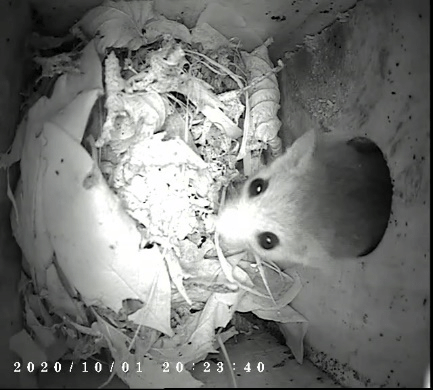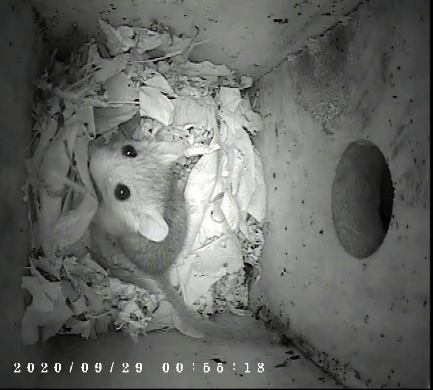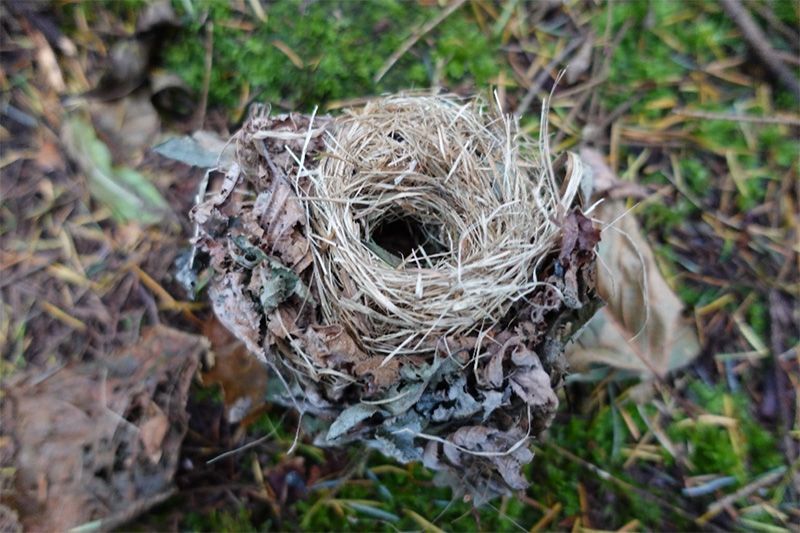Last summer we put out our Fingle Woods CCTV wildlife camera kits once again, to learn more about our hazel dormice. Last time we set them up, in 2018, we detected some fascinating behaviour that wouldn’t have been possible to observe using standard nest monitoring methods. We saw dormice spend time grooming their coats and the fur on their tails. We saw a mother preening and suckling her young and the heart-stopping moments when a large and aggressive wood mouse took over the nest of a pair of juvenile dormice. The young dormice put up a brave fight but were eventually evicted – to be found later in another nest box, preparing for hibernation.
We decided to use this unintrusive monitoring method again in the summer of 2020 because, during the Covid-19 pandemic, we were trying to reduce physical contact with other mammals to prevent the virus from jumping across species. The cameras were set up in July and, despite activity in nest boxes usually being low at that point of summer, we were delighted to see the action begin.
The early stages of nest building
In the first, five-minute video, we captured some exceptional footage of a young dormice which had left its maternal nest in the early summer. It was beginning life as an independent juvenile and started looking to establish a home range. With a combination of experience, persistence and luck, the nest box we selected was about to reveal the whole process of nest building. We took a chance and set up a trail camera outside and the CCTV camera to capture activity inside the box. Here is what we recorded:
Nest building in stormy weather
In this second video, the young dormouse was improving its skills and showed great resilience as it battled through storm Alex to continue building its first ever nest. Even though the dormouse got quite wet at times, it stuck to its task. At this point, we noticed it was not actually sleeping in the nest. Overnight, it would bring in leaves and nest lining material but, when the morning came, it went somewhere else to sleep. Watch the second video to see the nest take shape.
Final adjustments
The third video shows that, even though this young dormouse had spent three days building a nest, it was not the first to sleep in it. One morning, another dormouse entered the nest and slept there for twelve hours. Soon after that, the nest builder returned and used the nest quite regularly until it left for the final time – hibernation was calling. This instinct to build nests with great skill is one of the incredible attributes of this amazing little mammal. This is the third video in this nest building trilogy.
After three days of nest building, the young dormouse had built a beautiful nest. It is an inherent skill. It had no tuition from its parents or other dormice – it just learnt on-the-job. This final photo, taken after the nest was vacated, shows just what a work of art a dormouse nest can be. Let’s hope it is equally adept at building a hibernation nest, down in the leaf litter, that will last through the winter.
Written by Matt Parkins
Video production and editing by Matt Parkins and Tom Williams using a CCTV system designed by Susan Young.
The restoration of Dartmoor’s Fingle Woods is a project jointly managed by the Woodland Trust and National Trust.
Researchers Matt Parkins and David Rickwood are investigating how woodland management affects dormice:



